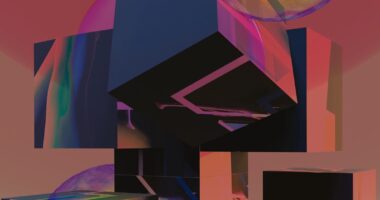In recent years, the art industry has undergone a significant transformation with the rise of Non-Fungible Tokens (NFTs). NFTs are unique digital assets that are stored on a blockchain, making them verifiable and immutable. This technology has revolutionized the way artists create, sell, and distribute their work. NFT artists are at the forefront of this movement, utilizing blockchain technology to create and sell their digital artworks.
NFT artists are individuals who create digital art and sell it as NFTs on various online platforms. These artists leverage blockchain technology to authenticate and prove ownership of their artwork. Unlike traditional artists who sell physical paintings or sculptures, NFT artists sell digital files that are tokenized on the blockchain. This allows for a new level of transparency and security in the art market.
Key Takeaways
- NFT artists create unique digital art pieces that are verified on the blockchain.
- Understanding cryptocurrencies is important for NFT artists as NFTs are bought and sold using cryptocurrency.
- NFT artists must have strong digital art skills and knowledge of blockchain technology.
- The NFT art creation process involves creating a digital art piece, minting it as an NFT, and listing it on a marketplace.
- Career opportunities for NFT artists include jobs in the art industry and crypto-related fields, with potential for high earnings and creative freedom.
Understanding NFTs and Cryptocurrencies
To understand the role of NFT artists, it is important to have a basic understanding of NFTs and cryptocurrencies. NFT stands for Non-Fungible Token, which means that each token is unique and cannot be exchanged on a one-to-one basis like cryptocurrencies such as Bitcoin or Ethereum. NFTs are typically built on the Ethereum blockchain, which provides a decentralized platform for creating and trading digital assets.
Cryptocurrencies, on the other hand, are digital or virtual currencies that use cryptography for security. They operate on decentralized networks called blockchains, which ensure transparency and immutability. Cryptocurrencies like Bitcoin and Ethereum are used as a medium of exchange for buying and selling goods and services, including NFT artwork.
NFT Artist Job Description
The job of an NFT artist involves creating digital artwork that can be tokenized as an NFT and sold on various online platforms. These artists use their creativity and technical skills to produce unique and visually appealing digital pieces. They may work with various mediums such as digital painting, 3D modeling, animation, or generative art.
One of the key responsibilities of an NFT artist is to create artwork that resonates with collectors and buyers in the NFT market. This requires a deep understanding of the current trends and preferences of the NFT community. NFT artists also need to be proficient in using digital art tools and software to create their artwork.
NFT artists differ from traditional artists in several ways. Firstly, they primarily work in the digital realm, creating artwork that exists solely in a digital format. Secondly, they leverage blockchain technology to authenticate and sell their artwork, whereas traditional artists rely on physical galleries or art dealers. Lastly, NFT artists have the opportunity to reach a global audience through online platforms, whereas traditional artists may be limited by geographic location.
NFT Art Creation Process
The process of creating an NFT artwork involves several steps. Firstly, the artist conceptualizes their idea and decides on the medium and style they want to work with. This could be anything from digital painting to 3D modeling or even virtual reality experiences.
Once the concept is finalized, the artist begins creating the artwork using digital art tools and software. This could involve sketching, painting, sculpting, or animating depending on the chosen medium. The artist may also experiment with different techniques and effects to achieve their desired aesthetic.
After the artwork is complete, the artist needs to tokenize it as an NFT. This involves minting the artwork on a blockchain platform such as Ethereum. The artist will need to pay a gas fee in cryptocurrency to complete this process. Once minted, the artwork is assigned a unique token ID and can be listed for sale on various NFT marketplaces.
Skills Required to Become an NFT Artist
Becoming an NFT artist requires a combination of artistic skills and technical knowledge. Here are some of the key skills needed to succeed in this field:
1. Artistic Skills: NFT artists need to have a strong foundation in traditional art techniques such as drawing, painting, and composition. They should also have a good understanding of color theory, perspective, and anatomy. These skills form the basis for creating visually appealing and engaging digital artwork.
2. Digital Art Tools: NFT artists need to be proficient in using digital art tools and software such as Adobe Photoshop, Illustrator, or Procreate. They should be comfortable working with digital brushes, layers, and various effects to create their artwork. Knowledge of 3D modeling software such as Blender or Maya can also be beneficial for creating immersive NFT experiences.
3. Blockchain Technology: NFT artists should have a basic understanding of blockchain technology and how it relates to NFTs. They should be familiar with the process of minting and selling NFTs on blockchain platforms. Knowledge of cryptocurrencies and how to navigate cryptocurrency wallets is also important for managing transactions.
4. Marketing and Branding: NFT artists need to have strong marketing and branding skills to promote their artwork and build a following. They should be able to effectively communicate their artistic vision and connect with potential buyers and collectors. Social media platforms such as Twitter, Instagram, and Discord are commonly used by NFT artists to showcase their work.
NFT Jobs in the Art Industry

The rise of NFTs has created new job opportunities in the art industry. Here are some examples of NFT-related jobs:
1. NFT Curator: NFT curators are responsible for discovering and promoting talented NFT artists. They curate collections or exhibitions on NFT marketplaces or galleries, showcasing a selection of high-quality artworks. They play a crucial role in shaping the NFT art market by identifying emerging trends and supporting promising artists.
2. NFT Platform Manager: NFT platform managers oversee the operations of online marketplaces or platforms that facilitate the buying and selling of NFTs. They ensure that the platform is user-friendly, secure, and provides a seamless experience for artists and collectors. They may also be responsible for implementing new features or improving existing ones based on user feedback.
3. NFT Consultant: NFT consultants provide guidance and advice to artists, collectors, or organizations looking to enter the NFT space. They have a deep understanding of the NFT market and can help clients navigate the complexities of minting, selling, and collecting NFTs. They may also assist with pricing strategies, marketing campaigns, or portfolio management.
Some companies and organizations that are hiring NFT artists include major art galleries, auction houses, and digital art platforms. For example, Christie’s, one of the world’s leading auction houses, has hosted several high-profile NFT auctions featuring works by renowned NFT artists. Digital art platforms like SuperRare and OpenSea also provide opportunities for artists to showcase and sell their NFT artwork.
Jobs in Crypto Related to NFTs
In addition to NFT-specific roles in the art industry, there are also various crypto-related jobs that are closely tied to the NFT ecosystem. Here are some examples:
1. Blockchain Developer: Blockchain developers specialize in building and maintaining blockchain networks. They are responsible for writing smart contracts, developing decentralized applications (DApps), and ensuring the security and scalability of the blockchain infrastructure. These skills are highly valuable in the NFT space as they underpin the technology behind NFT creation and trading.
2. Cryptocurrency Analyst: Cryptocurrency analysts monitor and analyze market trends and data related to cryptocurrencies. They provide insights and recommendations to investors or companies looking to enter the crypto market. In the context of NFTs, cryptocurrency analysts can help identify emerging trends or investment opportunities within the NFT art market.
3. Crypto Marketing Specialist: Crypto marketing specialists focus on promoting cryptocurrencies or blockchain projects to a wider audience. They develop marketing strategies, manage social media campaigns, and create content to educate and engage potential users. In the NFT space, crypto marketing specialists can help NFT artists or platforms reach a larger audience and attract more buyers.
Crypto Jobs for NFT Enthusiasts
For individuals who are passionate about NFTs but may not have artistic skills, there are still plenty of crypto-related jobs available. Here are some examples:
1. Community Manager: Community managers play a crucial role in building and nurturing online communities around cryptocurrencies or blockchain projects. They engage with community members, answer questions, and facilitate discussions. In the NFT space, community managers can work for NFT platforms or projects, helping to grow and engage their user base.
2. Content Creator: Content creators produce written, visual, or multimedia content related to cryptocurrencies or blockchain technology. They may write blog posts, create videos, or design infographics to educate and inform the community. In the context of NFTs, content creators can focus on producing content that highlights NFT artists, showcases new collections, or explores the impact of NFTs on the art industry.
3. Crypto Journalist: Crypto journalists report on news and developments in the cryptocurrency and blockchain space. They conduct interviews, write articles, and publish news stories to keep the community informed. In the NFT space, crypto journalists can cover topics such as new NFT releases, artist interviews, or market trends.
Career Opportunities in NFT Art
The NFT art industry is still relatively new but has seen tremendous growth in recent years. As more collectors and investors enter the market, there is a growing demand for talented NFT artists. This presents significant career opportunities for individuals looking to pursue a career in this field.
Successful NFT artists have the potential to earn substantial income from selling their artwork as NFTs. Some artists have achieved record-breaking sales, with prices reaching millions of dollars for a single artwork. This has attracted attention from traditional artists and collectors who are now exploring the NFT space.
Furthermore, NFT artists have the opportunity to collaborate with brands, musicians, or other artists to create unique and immersive experiences. They can also explore new mediums and technologies such as virtual reality or augmented reality to push the boundaries of digital art.
Benefits of Pursuing a Career as an NFT Artist
Pursuing a career as an NFT artist offers several benefits:
1. Creative Freedom: NFT artists have the freedom to explore new mediums, styles, and concepts without the limitations of traditional art forms. They can experiment with different techniques and push the boundaries of digital art.
2. Global Reach: NFT artists can reach a global audience through online platforms, allowing them to connect with collectors and buyers from around the world. This provides exposure and opportunities that may not be available in traditional art markets.
3. Financial Opportunities: The NFT market has seen significant financial growth, with some artists earning substantial income from their artwork. This provides financial stability and the potential for long-term career growth.
4. Ownership and Authenticity: NFTs provide a unique way for artists to prove ownership and authenticity of their artwork. This helps protect against plagiarism or unauthorized use of their work.
5. Innovation and Collaboration: The NFT space is constantly evolving, with new technologies and collaborations emerging. NFT artists have the opportunity to be at the forefront of this innovation and collaborate with other artists or brands to create groundbreaking experiences.
In conclusion, becoming an NFT artist offers exciting career opportunities in the rapidly evolving art industry. With a combination of artistic skills, technical knowledge, and an understanding of blockchain technology, individuals can create and sell unique digital artworks as NFTs. The potential for financial success, creative freedom, and global reach make this career path an attractive option for artists looking to embrace the digital age.
If you’re curious about the world of NFT artists and want to dive deeper into this fascinating field, you should definitely check out this insightful article on NFT-Jobs.com. Titled “Hello World: A Beginner’s Guide to NFT Art,” it provides a comprehensive introduction to the concept of NFTs and how they have revolutionized the art industry. This article is a must-read for anyone looking to understand the basics of NFT art and its potential impact on the creative landscape. Read more
FAQs
What is an NFT artist?
An NFT artist is an artist who creates digital artwork that is sold as a non-fungible token (NFT) on a blockchain platform.
What is an NFT?
An NFT is a unique digital asset that is stored on a blockchain platform, which provides proof of ownership and authenticity.
How do NFT artists create their artwork?
NFT artists create their artwork using digital tools such as graphic design software, 3D modeling software, and other digital art tools.
How do NFT artists sell their artwork?
NFT artists sell their artwork through online marketplaces that specialize in NFTs, such as OpenSea, Nifty Gateway, and SuperRare.
What are the benefits of being an NFT artist?
Being an NFT artist allows artists to reach a global audience and sell their artwork directly to collectors without the need for intermediaries such as galleries or auction houses.
What are some examples of NFT artwork?
Examples of NFT artwork include digital paintings, 3D sculptures, animated GIFs, and virtual reality experiences.
What is the future of NFT art?
The future of NFT art is uncertain, but many experts believe that it has the potential to revolutionize the art world by providing artists with new ways to monetize their work and reach a wider audience.





